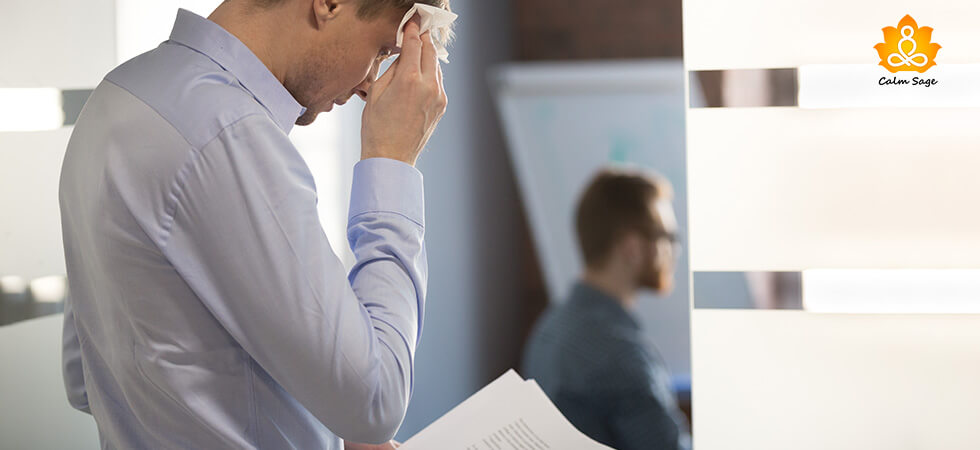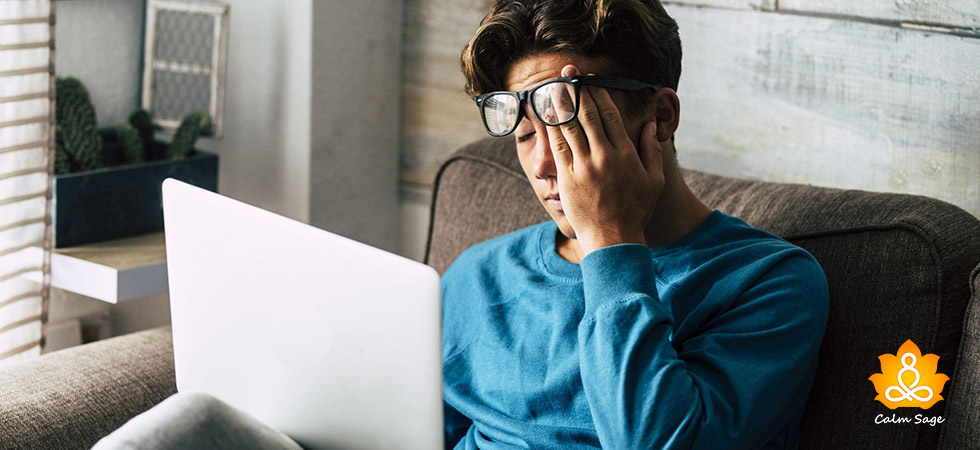Break The Cycle Of Performance Anxiety In 7 Simple Ways

Quite a common experience is performance anxiety if you look at it. Before any important meeting, conference, talk, test, competition, or even an actual performance, we all – at least for a brief period – experience jittery nerves, and butterflies in the stomach, otherwise known as performance anxiety.
As I said, quite common, isn’t it? Well, when performance anxiety becomes more than just a brief occurrence, it can become a part of a (truly never-ending) anxiety cycle. While performance anxiety isn’t recognized as a formal diagnosis, the effects of this on our mind and body aren’t less severe.
When we look at it, broadly, performance anxiety is one of the symptoms of a generalized anxiety disorder (GAD), but you don’t have to be diagnosed with GAD to experience performance anxiety. For instance; If the symptoms of performance anxiety only come up during social situations, then you can be diagnosed with social anxiety disorder.
Below, let’s take a look at some of the common symptoms of performance anxiety and how to break the cycle of performance anxiety in 7 simple ways.
Performance Anxiety: The Symptoms
Performance anxiety is a common experience. Here are some of the common performance anxiety symptoms you need to watch out for;
- Racing heartbeat
- Rapid breathing
- Dry mouth
- Tightness in the throat
- Trembling in the limbs
- Unable to speak
- Sweaty or clammy hands
- Nausea or feeling a knot in the stomach
- Dizziness
- Chills all over the body
- Elevated blood pressure
- Wanting to back out of the performance
- Making mistakes or errors during the performance
How To Deal With Performance Anxiety?
Did you know that almost 60% of musicians (in general) have reported signs and symptoms of performance anxiety? So, you’re not the only one who struggles with tightness in their chest, nervousness, nausea, or many other symptoms of performance anxiety.
The good news is that the symptoms of anxiety (any kind) can be managed. Here are some simple ways you can break the cycle of performance anxiety;
1. Try Relaxation Techniques
One of the best ways to calm your performance anxiety is to keep relaxation techniques handy. Some of the best and simple relaxation techniques to deal with performance anxiety can be circular breathing, progressive muscle relaxation, and box breathing.
Here’s how you can try each relaxation technique;
- Circular Breathing: Close your eyes and purse your lips. Slowly exhale for as long as you can, pause while counting to ten, and then slowly inhale as much as you can through your nose. Repeat as necessary.
- Progressive Muscle Relaxation: Sit in a comfortable position (or lie down). Deliberately tighten your muscles and then relax them slowly one by one, starting from the toes and ending at your head.
- Box Breathing: Close your eyes and inhale through your nose at the count of 4, hold the breath while counting to 4, exhale through your mouth at the count of 4, and again hold the breath while counting to 4. Repeat as necessary.
2. Maybe Some Guided Imagery
Guided imagery is another technique that can help you enter your happy place and boost relaxation. Here, you need to envision a calm environment (maybe your happy space). Focus on these images to remain calm and improve relaxation. You can refer to online guided imagery sessions or you can learn this in a professional setting.
3. Better Your Self-Talk
When your internal dialogue is focused on negativity, then it could only make your symptoms of anxiety worse, so learn to better your self-talk. Pep talks only work when they encourage you to be positive.
Negative thinking can only worsen performance anxiety. You can try this by reminding yourself of three reasons why you’ll perform well. You can also make a list of positive affirmations to read aloud before a performance.
4. Face Your Fears
No one wants to face their fears when they can cause so much distress but while it may sound like a good option, it’s not. Avoiding or escaping your fears can increase your distress and anxiety, so it’s time to do the opposite of running away.
Facing your fears can scare you, but the more you stand in the face of fear, the more your anxiety will fade. You can start small and then go from there. No need to rush.
5. Watch What You Drink Or Eat
The idea of indulging in comfort foods in times of distress can seem tempting but it could be harmful. To break the cycle of performance anxiety, it’s recommended you watch what you consume. Limit your caffeine and sugar intake as more of these substances can increase your blood sugar and trigger anxiety.
6. It’s All About Excitement
Feeling nervous before performing is common but there are times when symptoms of excitement can mimic symptoms of anxiety. Performance anxiety symptoms are also likely to occur when you’re about to do something you enjoy, and here, instead of focusing on anxiety symptoms, try to reframe the symptoms as excitement. Let the symptoms motivate you instead of scaring you away. Stay excited, not anxious.
7. Seek Help, If Needed
When your performance anxiety symptoms begin to negatively affect your life – work life, social life, and personal relationships – then you might need to seek professional help.
Cognitive-behavioral therapy (CBT) can help reframe your thoughts and change how you look at a situation. It can also help you focus on the positive and your strengths instead of the weaknesses you may see.
Note: Online-therapy.com is specialized in providing CBT-based therapy. They have a pool of certified therapists you can take help from and you can even choose your own therapist.
Get 20% off on Online-Therapy.com
What Next?
Experiencing performance anxiety is common (and truthfully, much needed from time to time). It’s OK to feel anxious, but it’s also important to not let the anxiousness overwhelm you. When your anxiety symptoms become a common occurrence, it could start a performance anxiety cycle.
To break the cycle of performance anxiety, try these above-mentioned 7 ways. If you need additional help and support, you can always reach out to a professional counselor.
Just a few simple tricks can help you get over performance anxiety and feel excited instead of anxious.
I hope this article helped you learn how to deal with performance anxiety. For more, you can write to us at info@calmsage.com or DM us on social media.
You can also share your thoughts and tips with us in the comments below.
Take Care!




















